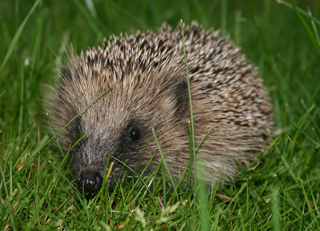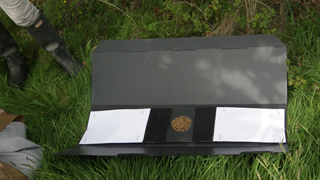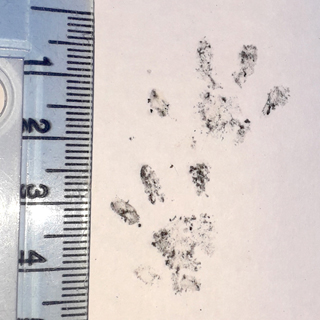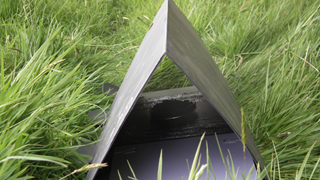 When did you last see a hedgehog on the Roseland? They are nocturnal animals so if you see one during daylight the chances are that all is not well. Even so, when did you last see a dead hedgehog at the roadside as a result of roadkill?
When did you last see a hedgehog on the Roseland? They are nocturnal animals so if you see one during daylight the chances are that all is not well. Even so, when did you last see a dead hedgehog at the roadside as a result of roadkill?
Fossilised evidence from central Spain shows that hedgehogs have been on earth for the last 25 million years, They are the UK’s only spiny mammal, beloved as characters in children’s’ literature like Mrs Tiggywinkle and endeared to us because they are relatively tame and approachable. A word of warning though if you do find one and have to pick it up. Wear gloves as they are believed to possibly carry ringworm.
 Now hedgehogs are becoming increasingly quite rare in many areas, including the Roseland. While their national numbers have plummeted and they are in decline in many rural areas they are increasing in urban areas, although there are big variations in the UK. Around some towns and villages their status can be excellent, but in arable land they may well be absent. Gardens are now usually better than farmland for this iconic, useful species.
Now hedgehogs are becoming increasingly quite rare in many areas, including the Roseland. While their national numbers have plummeted and they are in decline in many rural areas they are increasing in urban areas, although there are big variations in the UK. Around some towns and villages their status can be excellent, but in arable land they may well be absent. Gardens are now usually better than farmland for this iconic, useful species.
 The initial findings of the recent CWT mammals’ group survey Operation Hedgehog, led by Tom Shelley, tracking small mammal prints, in which Wild Roseland participated, seems to bear this out. Many thanks to the volunteers, Antonina, Bridget and Marge; and particularly to Philip Marsden and family, both for allowing us to carry out the survey on his land and for their interest and involvement. See the attached photographs for how small mammal tracks can be recorded. There are reports of occasional hedgehogs in St. Mawes, Ruan Lanihorne and St Just in Roseland, although in Tregony, there are more regular sightings than anywhere else locally.
The initial findings of the recent CWT mammals’ group survey Operation Hedgehog, led by Tom Shelley, tracking small mammal prints, in which Wild Roseland participated, seems to bear this out. Many thanks to the volunteers, Antonina, Bridget and Marge; and particularly to Philip Marsden and family, both for allowing us to carry out the survey on his land and for their interest and involvement. See the attached photographs for how small mammal tracks can be recorded. There are reports of occasional hedgehogs in St. Mawes, Ruan Lanihorne and St Just in Roseland, although in Tregony, there are more regular sightings than anywhere else locally.
So why are hedgehogs declining?
- Recent research suggests that in the countryside pesticides, herbicides, and fertilisers have reduced the invertebrates such as slugs, earthworms, grubs, caterpillars, and beetle larva which are hedgehogs’ normal diet.
- The building of more roads has broken up their territorial range and increased road kill deaths.
- Increasingly badgers, their main natural predator, may have an effect where their habitat is already degraded.
- Large fields make it difficult for hedgehogs to move around, especially where hedge flailing means that areas suitable for nesting are rarer.
What can we do to help the situation in our gardens?
 Hedgehogs have night-time roaming territories of up to 1-2 km. No single garden is large enough for them, so make sure they can get in and out. Ensure that there is access for them to move between gardens by making a boundary fence hole of around 13 cm square to connect to other land available making it a hedgehog highway.
Hedgehogs have night-time roaming territories of up to 1-2 km. No single garden is large enough for them, so make sure they can get in and out. Ensure that there is access for them to move between gardens by making a boundary fence hole of around 13 cm square to connect to other land available making it a hedgehog highway.
- Avoid treating your garden with pesticides and slug pellets as these can poison hedgehogs.
- Have a diversity of plants rich in nectar to encourage insects.
- Create a wild corner by making dead wood piles and have deciduous leaves around in which hedgehogs can make nests; or invest in a hedgehog house. Do not move any shelter you make between November and March as hedgehogs do hibernate and their bodies are in stupor while this is happening.
- When gardening, take care if you use a strimmer or are having a bonfire and if you have a pond make sure there is a ramp for access and recovery for hedgehogs.
- Put out a dish of water, not milk, as hedgehogs are lactose intolerant.
All little things, but to a hedgehog they really do matter. Further information on their history, biology, interesting facts and rescue is below.
- pricklesandpaws.org local help and rescue centre, Cubert, Newquay.
- hedgehogstreet.org useful, informative, very user friendly website.
- cornwallmammalgroup.org active local group.
- cornwallwildlifetrust.org.uk umbrella organisation for no.4, the C.M.G.
- The State of Britain’s hedgehogs 2018. Report of the British Hedgehog Preservation Society and People’s Trust for Endangered Species.
_____________
Contributors:
Article by David Hall. Edited by Tara Robinson.
Wild Roseland is a group of volunteers who care passionately about looking after the nature and landscape of the Roseland peninsula in south Cornwall. Through a number of initiatives and projects, the aim is to inspire and enhance the conservation of this special place for all.
Image credits:
All images supplied by David Hall & Wikimedia
